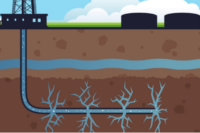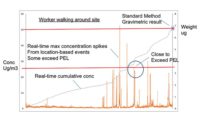 The National Institute for Occupational Safety and Health (NIOSH) has launched the a Center for Direct Reading and Sensor Technologies (NCDRST) which will serve a home for NIOSH’s longstanding work in the area of exposure assessment devices—work that is done across the Institute.
The National Institute for Occupational Safety and Health (NIOSH) has launched the a Center for Direct Reading and Sensor Technologies (NCDRST) which will serve a home for NIOSH’s longstanding work in the area of exposure assessment devices—work that is done across the Institute.
From NIOSH Director John Howard:
The use of sensors has increased exponentially in professional applications and in everyday life. Countless remote wireless sensors are now employed for monitoring personal health, the environment, agriculture, work sites, disaster response efforts, and “smart” buildings and facilities, to name some examples. New devices or smart phone applications are appearing every week that promise to measure a person’s environment or health status. The availability of affordable smart phones has driven improved development of sensor technologies for all these applications. Manufacturers are developing and marketing wearable devices and even implantable devices. One example of an exciting current partnership in the occupational safety and health area, which is being funded through the NIOSH extramural grant program and developed at the University of Michigan, is a belt-worn monitor to detect volatile organic compounds.
A whole new era
Direct-reading and sensor technologies are opening up a whole new era of participatory research and information sharing. Environmental health research is embracing participatory research as a way to gather more exposure data in an individual’s work, home, and play environment. These monitors and sensors make it possible to perform a more comprehensive exposure assessment than ever before. In addition, these technologies will be useful in measuring an individual’s exposome, which is a measure of all exposures and their impact on an individual’s health.
Devices that will revolutionize industrial hygiene
The future of direct-reading devices and smartphone applications may help to revolutionize the practice of industrial hygiene and safety evaluations. A promise of these technologies is that they would allow the industrial hygienist to get immediate results of a measurement so that exposures could be reduced or eliminated without delay. These technologies also allow the industrial hygienist to measure intermittent or determine peak exposures and evaluate potential health consequences. By combining sensors with location or video information, specific work tasks can be evaluated as a potential source of exposure. Another promise of direct-reading and sensor technologies is worker empowerment. Through the use of these technologies, workers can help their employers, supervisors, and colleagues reduce harmful workplace exposures and become active partners in preventing occupational illnesses and injuries.
While these technologies have great promise, more information is needed to understand their utility. Some of the major questions surrounding these technologies are (1) do these monitors or applications accurately measure what they are supposed to be measuring, (2) how are the monitors calibrated, (3) how are these technologies validated, and (4) what are the best uses for these monitors, such as screening vs compliance. Another issue is the large amount of data that can be collected from direct-reading and sensor technologies. How that data is analyzed and interpreted presents challenges at this time.
What the center entails
The new NIOSH center will focus on coordinating a national research agenda for direct-reading methods and sensor technologies; developing guidance documents pertinent to direct-reading methods and sensors, including validation and performance characteristics; developing training protocols; and establishing partnerships to collaborate in the center’s activities. An example of recent internally funded sensor-related work at NIOSH involved the evaluation of a number of noise-monitoring apps. NIOSH noise researchers found that different platforms (Apple iOS versus Android) could affect the overall accuracy of the measurements. The NIOSH Science Blog (Hearing Loss) has further information on those findings.
As sensor technology capabilities are rapidly developing, the new NIOSH center will keep abreast of advancements in new sensor technology and make recommendations on how best to adapt those developments for the workplace. We invite you to partner with us to identify gaps in our knowledge and to develop research strategies for reliable development, validation, use, and interpretation of direct-reading and sensor technologies.
A new NIOSH topic page (http://www.cdc.gov/niosh/topics/drst/default.html) provides further information on the new NIOSH center. Please contact Dr. Gayle DeBord (gdebord@cdc.gov) or Dr. Mark Hoover (mhoover1@cdc.gov) if you have any questions about, or are interested in, partnering in our NCDRST activities.



